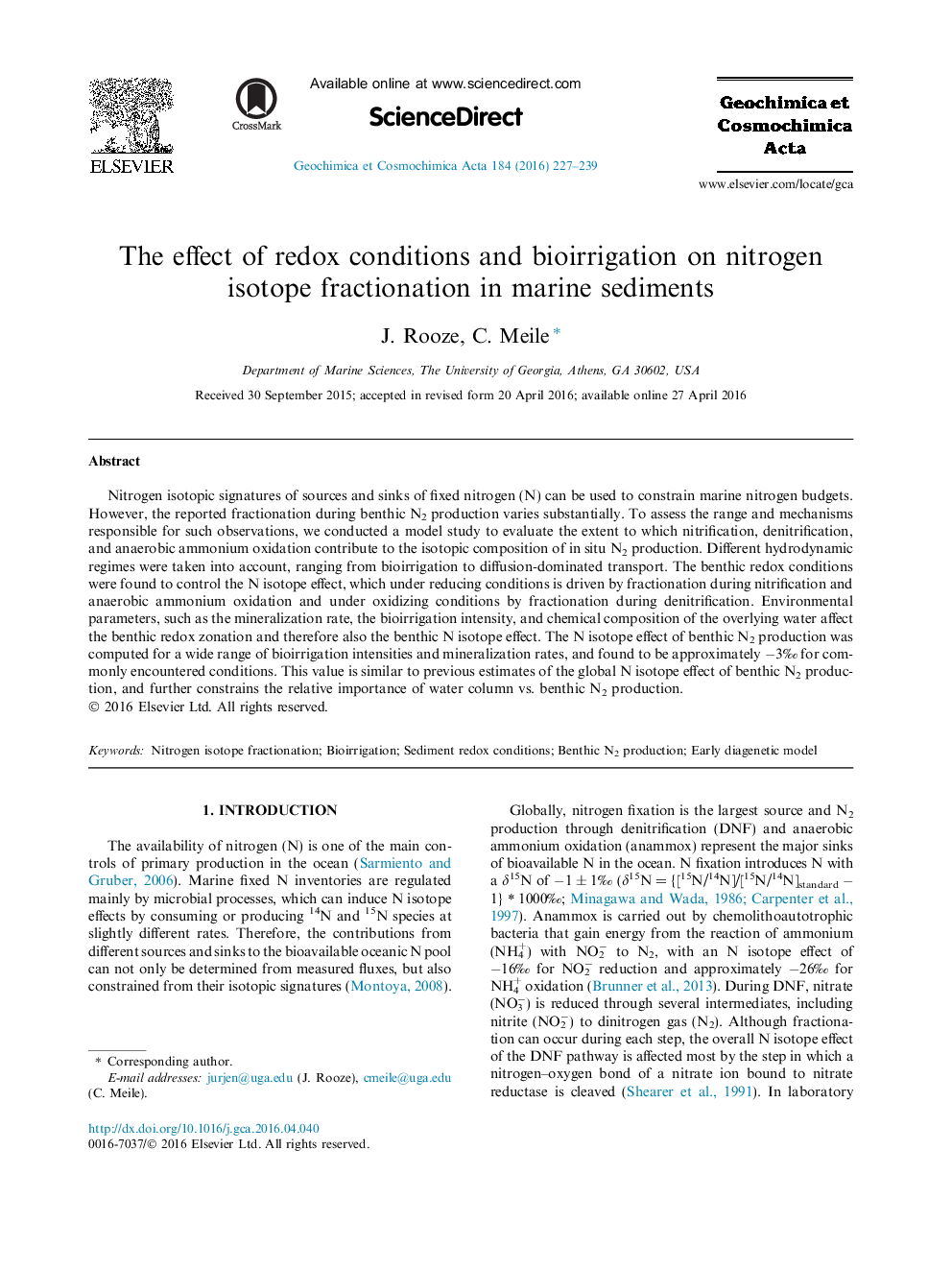| Article ID | Journal | Published Year | Pages | File Type |
|---|---|---|---|---|
| 4701813 | Geochimica et Cosmochimica Acta | 2016 | 13 Pages |
Nitrogen isotopic signatures of sources and sinks of fixed nitrogen (N) can be used to constrain marine nitrogen budgets. However, the reported fractionation during benthic N2 production varies substantially. To assess the range and mechanisms responsible for such observations, we conducted a model study to evaluate the extent to which nitrification, denitrification, and anaerobic ammonium oxidation contribute to the isotopic composition of in situ N2 production. Different hydrodynamic regimes were taken into account, ranging from bioirrigation to diffusion-dominated transport. The benthic redox conditions were found to control the N isotope effect, which under reducing conditions is driven by fractionation during nitrification and anaerobic ammonium oxidation and under oxidizing conditions by fractionation during denitrification. Environmental parameters, such as the mineralization rate, the bioirrigation intensity, and chemical composition of the overlying water affect the benthic redox zonation and therefore also the benthic N isotope effect. The N isotope effect of benthic N2 production was computed for a wide range of bioirrigation intensities and mineralization rates, and found to be approximately −3‰ for commonly encountered conditions. This value is similar to previous estimates of the global N isotope effect of benthic N2 production, and further constrains the relative importance of water column vs. benthic N2 production.
